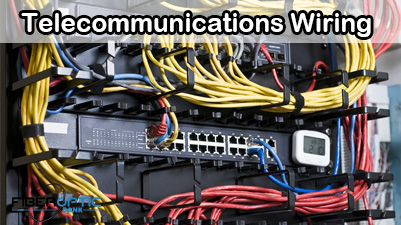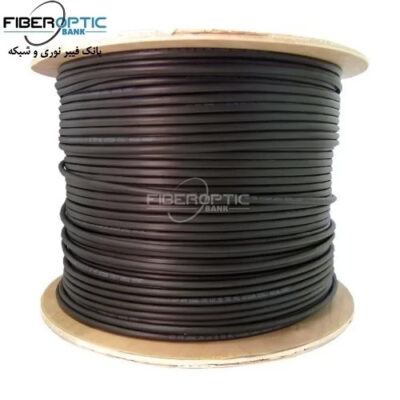Telecommunications Wiring
Telecommunications wiring, also known as telecom cabling or telecom wiring, refers to the cabling infrastructure used to transport voice and data communications between different locations within a building or across multiple buildings, having a significant impact on the performance of communication networks. And to ensure a smooth flow of communication, it is essential to have a properly designed telecom room (TR). In this article, we will introduce telecommunications rooms and telecommunications wirings and offer several tips for telecom cabling design.
What Is A Telecommunications Room?
A telecommunications room is a secure and controlled designated area within a building where all the telecom wirings and equipment are installed and managed. It plays a critical role in networking as it connects the IT infrastructure with end users for communication networks and helps in keeping track of wires, including data, voice, video, and security systems. A well-designed TR can help prevent unauthorized access and ensure the safety and reliability of communication networks.
What Is Telecommunications Wiring?
As mentioned above, a telecom room is a space that contains cable terminations and associated cross-connect cabling. And all cables and wires require organized telecom cabling to offer flexible installations, simplified network upgrades, and easier cable tracing. Most telecom wires are mounted in two ways, horizontally or vertically. Cable management tools like fiber enclosure, fiber cassettes, fiber adapter panels, cat6/cat7 patch panels, and vertical cable managers are usually used in telecom cabling to route and manage massive wires. The telecom cabling system is a vital component of the communication network, which can ensure good data transmissions of work area equipment such as computers, Wifi access points, IP cameras, etc. Then, how to build good telecommunication wiring?
Tips for Telecom Cabling Design
Here are some general tips that should be considered when designing a telecommunications wiring system to ensure that the cabling infrastructure meets the needs of the network and performs reliably.
1. Assess network needs: Before designing the cabling system, it’s important to assess the network’s needs, including bandwidth requirements, data traffic, and the types of devices and applications that will be used on the network. This will help determine the type and quantity of cables, connectors, and other components required.
2. Provide enough space for telecom cabling: The size of the TR should be adequate to accommodate the telecom wirings and equipment like racks or network cabinets. And consider how much floor and ceiling space is required so that technicians can easily move around the telecom cabling system for troubleshooting, and maintaining proper clearances.
3. Choose cable types: Select the appropriate cable types based on the network’s needs and telecom cabling infrastructure. Copper cables with higher bandwidth, such as Cat6, Cat6a, and Cat7, are commonly used for applications of 10GBASE-T, and Cat8 for 25 Gbps or 40Gbps, while fiber optic cables like OS2 and OM3/OM4/OM5 can support up to 100G connections.
4. Consider cable management and maintenance: When selecting a cable management system, it is wise to choose open frames for easy access to telecommunications wirings to ensure easy identification and troubleshooting. Other advanced cable management solutions include telecom patch panels and fiber cassettes with a modular design to be easily operated, allowing for economical and efficient cable management and maintenance.
5. Plan for future scalability: Taking into account the expected growth of the communication network, the telecom cabling infrastructure should be designed to accommodate future expansion without significant disruption or additional costs.
Conclusion
Designing an ideal telecommunications room requires careful planning and consideration of the communication network’s requirements. A well-designed telecom room, which includes telecom wiring and equipment, can help ensure the efficient operation of the communication network, prevent downtime, and provide ease of access for maintenance.
Source: community.fs
Related products...
fiber-optic-cable
fiber-optic-cable
fiber-optic-cable
















[ratings]